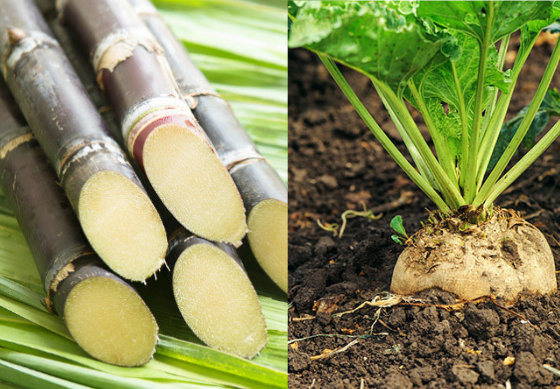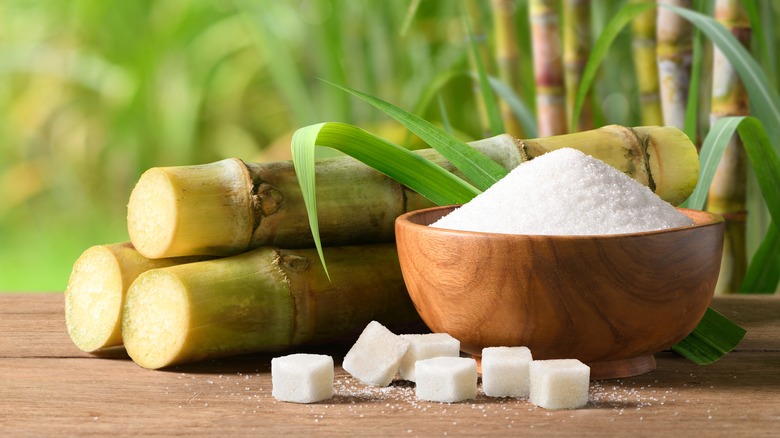Many people compare beet sugar vs cane sugar to understand their differences in flavor and consistency.
Many people compare beet sugar vs cane sugar to understand their differences in flavor and consistency.
Blog Article
Discovering the Differences being used and Advantages In Between Beet Sugar Vs Cane Sugar
In the cooking globe, the option between beet sugar and cane sugar is not simply regarding sweetness yet includes a nuanced consideration of flavor, application, and influence. While both sugars originate from different plants, each undergoes one-of-a-kind manufacturing procedures that discreetly influence their attributes and viability for various recipes. As chefs and customers increasingly focus on both the ecological and flavor accounts of their active ingredients, comprehending these distinctions becomes critical. This exploration uses understanding into exactly how each sugar kind can best boost culinary developments.
Beginnings and Manufacturing Processes of Beet and Cane Sugar

Walking cane sugar, on the various other hand, comes from the sugarcane plant, an exotic turf native to Southeast Asia however now cultivated in tropical zones worldwide - beet sugar vs cane sugar. The manufacturing of cane sugar begins with the harvesting of cane stalks, which are crushed to launch the juice.

Nutritional Content and Wellness Considerations

When comparing the dietary content of beet sugar and cane sugar, it becomes apparent that both kinds essentially give the same calorie values, with about 16 calories per tsp and no substantial nutrient diversity. Both sugars, when eaten in excess, can contribute to raised blood sugar levels, a danger factor for diabetic issues and other metabolic conditions. From a health point of view, regulating intake of any type of kind of sugar, whether from beet or cane, is advisable to prevent these potential unfavorable results on well-being.
Flavor Accounts and Culinary Applications
Despite their comparable chemical frameworks, beet sugar and cane sugar vary discreetly in flavor, which can affect their usage in different cooking contexts. Cane sugar often carries a tip of molasses, also in its refined kind, providing a cozy, caramel-like undertone that boosts baked products, coffee, and chocolate-based see dishes. On the other hand, beet sugar is identified by its highly improved, neutral taste, making it a flexible sugar that does not alter the taste profiles of meals.
Environmental Effect and Sustainability
While both beet and cane sugars are originated from plants, their ecological influences differ dramatically due to the unique methods of growing and handling needed for each. Sugar beet growing often includes extensive mechanization, which can raise fossil fuel usage look at these guys and carbon discharges. Nonetheless, beetroots can be grown in cooler climates and need much less watering, potentially minimizing water use compared to sugarcane. Sugarcane, on the other hand, is usually expanded in exotic regions where it relies heavily on irrigation and a much longer growing duration, raising its water impact.
Furthermore, the processing of sugarcane typically produces a significant amount of waste, consisting of bagasse, which, although useful as biofuel, often adds to air pollution if burned inefficiently. Sugar beet handling uses more of the raw materials, causing much less waste. Both markets face obstacles in lowering their ecological footprints, yet recurring advancements in agricultural practices and waste monitoring are aiming to enhance sustainability.
Economic Aspects Influencing the Sugar Sector
The economic characteristics of the sugar industry are dramatically influenced by international market demands and profession policies. Aspects such as tariffs, aids, and worldwide profession contracts play crucial functions in shaping the competitive landscape. For instance, in regions where sugarcane or sugar beet manufacturing this link is subsidized, manufacturers may have a monetary advantage that enables them to use lower prices on the worldwide market. This can develop disparities in productivity and market gain access to for producers in nations without such aids.
Furthermore, variations in international need for sugar, affected by nutritional patterns and commercial usage in food, straight effect costs and production levels. beet sugar vs cane sugar. Climate condition also play a critical function, as they can substantially impact crop yields and, consequently, the supply chain. This variability presents a degree of financial unpredictability that can cause financial investment volatility in sugar manufacturing industries, influencing decisions from growing to market approach
Verdict
In conclusion, both beet and cane sugar have unique qualities that match various cooking demands. While cane sugar conveys a rich flavor perfect for boosting baked products, beet sugar's neutrality is perfect for lighter dishes. Nutritional resemblances notwithstanding, their distinctive manufacturing procedures and ecological effects include intricacy to the option between them. Hence, recognizing these distinctions helps chefs and consumers make educated choices that align with their wellness, cooking, and honest preferences.
Report this page